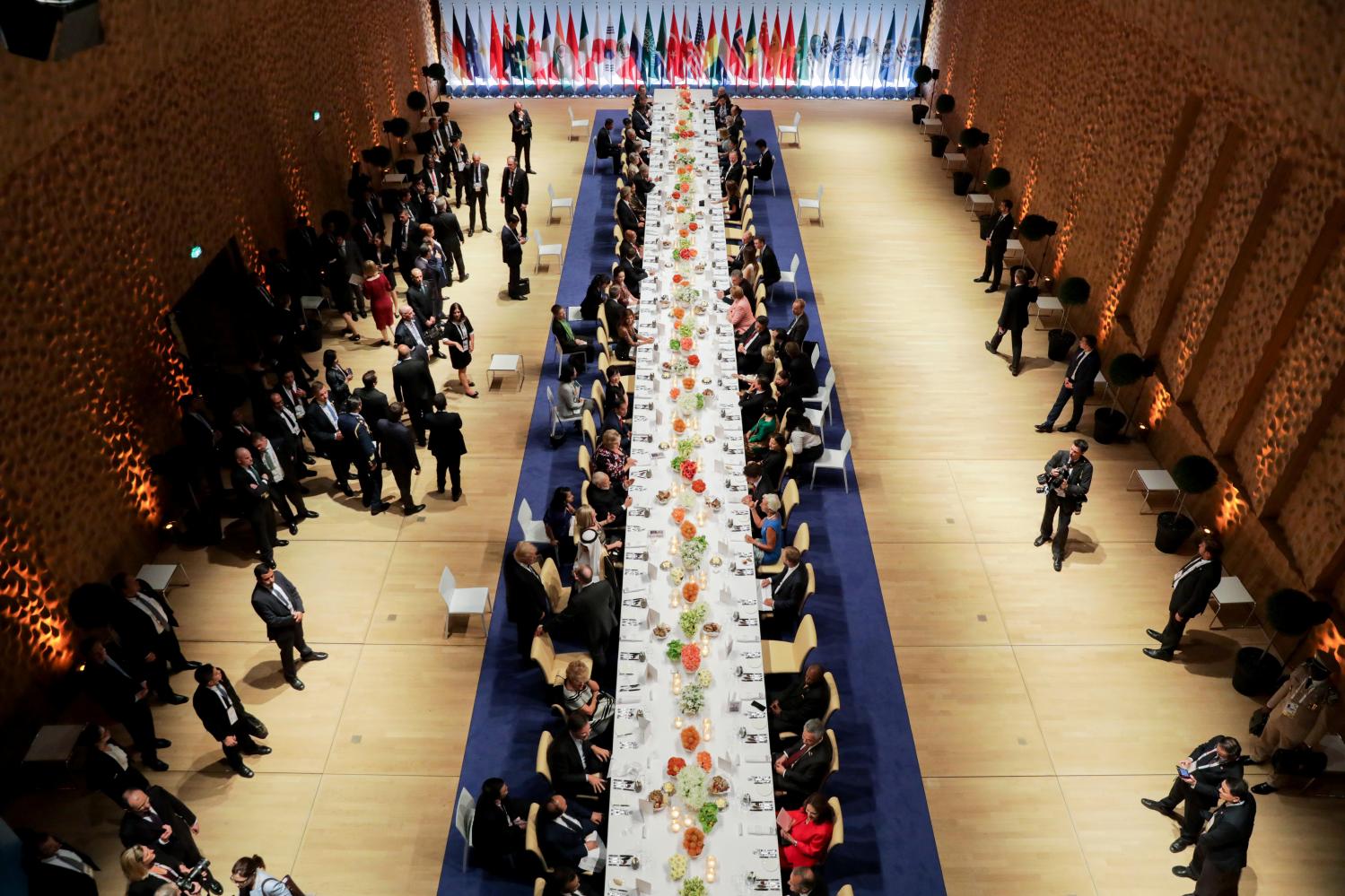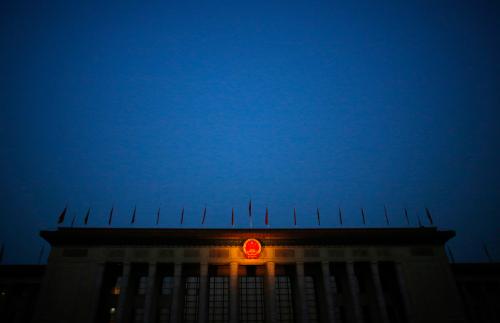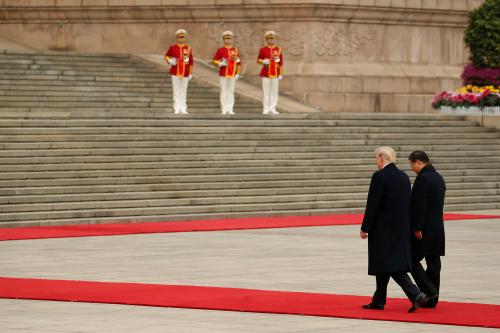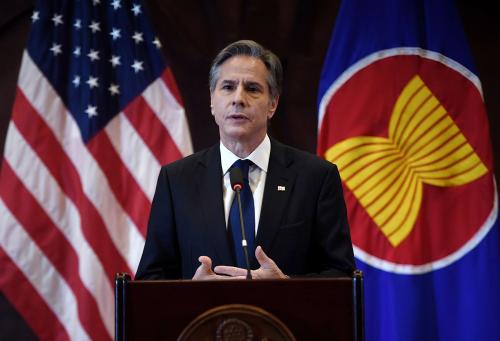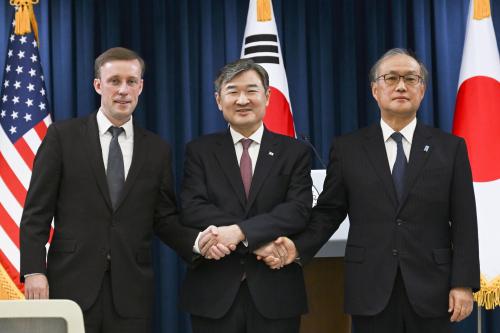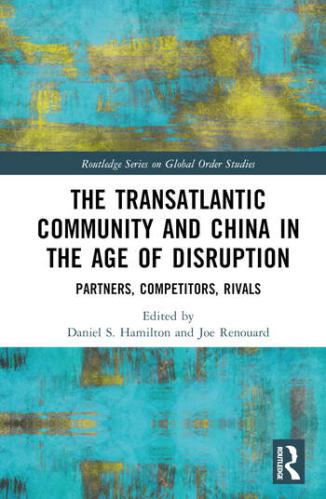MODERATOR’S SUMMARY
The world’s major powers are currently engaged in a careful balancing act when it comes to navigating the complex and ever-changing competition between the United States and China. This discussion focuses on the actors that have agency in this dynamic, and how each is approaching the escalation of U.S.-China rivalry.
The United States and China are now the world’s clear number one and number two in economic scale, energy consumption, carbon emissions, military spending, and technology. For most metrics indicative of relative international power, there is a substantial and growing gap between the top two powers (the U.S. and China) and the rest (with the exception of gross domestic product, if you consider the combined GDP of the European Union member states).
The countries discussed in this interview all have deep ties with both the United States and China. They are faced with increasingly difficult decisions regarding their current and future relations with both great powers. How are these countries attempting to cope, survive, and shape the rivalry, and to what extent are there commonalities or divergences of strategy across these issues?
In January 2020, Bruce Jones sat down with five other Brookings scholars — Fiona Hill, Tanvi Madan, Amanda Sloat, Mireya Solís, and Constanze Stelzenmüller — to discuss how U.S.-China rivalry is unfolding in India, Japan, the United Kingdom, the European Union (with a focus on Germany), Russia, and Turkey. In the interview, key areas of geopolitical competition, including technology, infrastructure development, trade, and sea power, are explored. The edited transcript below reflects their assessments.
The interview was conducted before the COVID-19 outbreak became a global pandemic. While some might have thought that the outbreak of an infectious disease would have triggered patterns of cooperation, that has not been the response of Washington and Beijing when it comes to relations with one another. Rather, COVID-19 has both added fuel to the simmering U.S.-China rivalry, and turned global public health and health institutions into yet another battleground of that rivalry — to the deep discomfort of the other powers discussed here.
At the time of publication, international public attention is still gripped by the dynamics of the COVID-19 crisis, and the incipient recovery from the first wave of that crisis by many countries in the global North. The health crisis has added to, not assuaged, geopolitical tensions. And when the COVID-19 crisis recedes, as it eventually will, the pre-existing tensions in the U.S.-China dynamic will return, only heightened. For other leading powers, navigating U.S.-China tensions is an increasingly fraught part of their foreign policy — and now even of their domestic health and economic recovery plans.
The highlights:
- India has seen China as one of its primary strategic challenges since the late 1950s. In terms of U.S.-China relations, India benefits from a “Goldilocks” or just-right rivalry between the two great powers. If U.S.-China bilateral relations deepen and become warmer, India will matter less to both countries and a “G-2” can even harm its interests. If U.S.-China rivalry becomes too cold and competitive, India fears the destabilizing effect in Asia and that it will be pressured to choose a side — a decision Delhi would be loath to make. India will make choices, even join coalitions, but those are more likely to be issue-based than “bloc”-based.
- Japan finds itself in a challenging position, wedged between the United States and China. Japan’s economy remains highly integrated with China’s, while Tokyo still relies on the United States for its physical security. As China aggressively asserts its claims in the region — including through increased arms acquisition and naval deployments — and Washington proves unreliable in the Asia-Pacific, Japan has great cause for concern. Even as Tokyo is increasingly at odds with China’s aggressiveness in the region, they are too economically integrated with China to activate a full-scale decoupling. Japan can still leverage its primacy as a major player in infrastructure finance in Asia as a tool for international economic statecraft.
- The U.S.-China debate is particularly salient across the entire European digital landscape. The United Kingdom, eager to upgrade its domestic infrastructure after leaving the European Union, ignored Washington’s admonitions against partnering with Huawei for its 5G network infrastructure. Do European nations have the internal research and development capabilities to compete with China’s bigger, more advanced, state-sponsored telecommunications giants, who can offer 5G wireless networks with greater reach and lower costs than any American or European firms?
- Though its members continue to engage China on a state-to-state level, in 2019 the European Union collectively acknowledged China as a “systemic rival.” While the EU remains the chief investor in Europe’s infrastructure, China is closing the gap, and Europeans are becoming increasingly aware of and concerned by China’s ability to challenge and shape their continent. Europeans find that Washington’s current approach to China is overly aggressive, and they do not want to be squeezed between the United States and China.
- Germany is the fulcrum of U.S.-China competition, due to its deep economic ties with China and political and economic ties with the United States. Through the lens of their individual bilateral relationships with Germany, both the United States and China see Germany as proving grounds to pursue their geopolitical strategies. Germany, in its own right, has started to develop more wide-ranging strategies toward dealing with China. Over the last decade, Berlin has developed Central Asian and Indo-Pacific strategies and is actively pursuing closer ties with India. At the same time, Beijing itself views Germany as a model for how a nation can reinvent itself after a period of great turmoil.
- In this era of great power competition and fragile international order, international institutions are increasingly caught in a bind, reluctant to criticize either one of those two powers, even with strong backing from one of them. That is weakening public confidence in international institutions, although the governments discussed here tend to a realist view of the role and limits of international institutions.
- Turkey, which could be a jewel in the crown of China’s Belt and Road Initiative (BRI), has presented a unique challenge for Beijing. There are slowly growing economic ties, yet their relationship remains marred by competition and mistrust. President Recep Tayyip Erdoğan, who has been accused of human rights violations at home, has publicly voiced concerns over China’s treatment of the Uighurs, a Muslim and Turkic minority group. Sitting at the crossroads of Europe and Asia, and with key shipping routes across the Black Sea, Turkey remains an interesting space to watch how U.S.-China competition unfolds.
- Russia has an adversarial history with the United States, but an even older and more complex relationship with its neighbor, China. Russian officials are wary of possible Chinese expansion into Russian territory and China’s naval designs on the Arctic, an area long seen as Russia’s domain. Despite tensions in their bilateral relationship, Russia and China share interests and a mutual distaste for the United States operating in their own backyards. Short of a formal alliance, we can observe increasing Russia-China policy convergence, designed to take advantage of weakness in the West.









